15 Neuromarketing Books You Must Read In 2025
Apparently, you should never judge a book by its cover … that’s worrying, since these ones say that you’re about to do just that! According to their best-selling, $billion-making and Nobel-Prize-winning authors, you will judge these neuromarketing books before you even realise it.
Our latest publication, Smart Persuasion, was inspired by the work of both psychologists and digital marketing gurus. This is our chance to pick a few favourites and assemble a brand-boosting, fortune-making and (in some cases) world-saving shortlist. These are the neuromarketing books every digital marketer should know by heart.
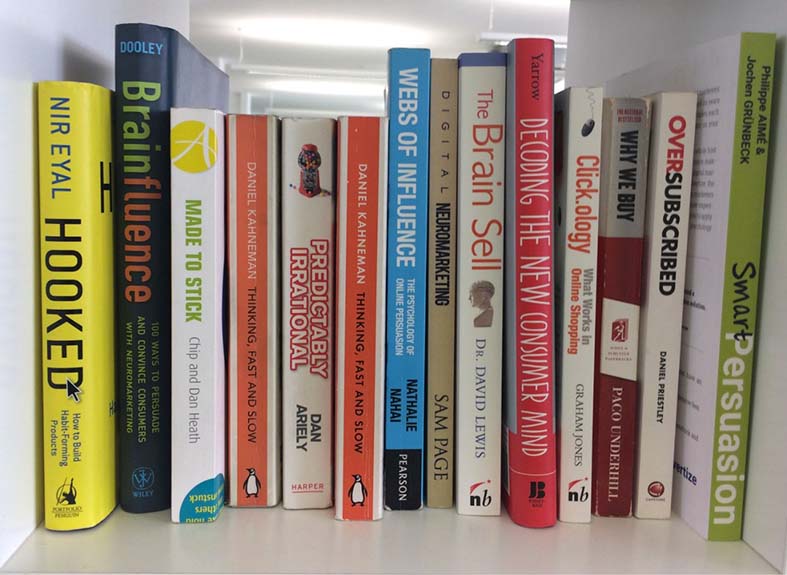
15 Neuromarketing Books You Need On Your Shelf in 2025
We listed our favourite neuromarketing books from 1 to 15 – giving you a selection of the most essential reading for 2025. This list is not about the most famous author or the most popular item on the bookshelf. Instead, it is about the neuromarketing books that digital marketers cannot do without.
1. Smart Persuasion – (Philippe Aimé and Jochen Grünbeck, 2019)
Amazon . GoodReads . Best Review
 Also by These Authors: The Hybrid Statistical Approach, Neuromarketing Principles
Also by These Authors: The Hybrid Statistical Approach, Neuromarketing Principles
Combining insights from behavioural economics and consumer psychology, Smart Persuasion applies neuromarketing principles to the world of eCommerce. The book explains how cognitive biases shape consumer behaviour and shows how digital marketers can communicate their value more effectively. Care has been taken to document the original studies that inform each principle, and these are packaged into concrete marketing strategies.
Have you ever wondered why some websites stand out when it comes to turning visitors into customers? According to a recent study, members of Amazon Prime convert on a remarkable 74% of their sessions …
…and Booking.com’s conversion rates are one of their best-kept secrets. Would you believe that much of their success is rooted in the work of a number of psychologists, behavioural economists and even Nobel Prize winners?
2. Predictably Irrational – (Dan Ariely, 2009)
Amazon . GoodReads . Best Review
 Also by this Author: Dollars and Sense, The Honest Truth About Dishonesty
Also by this Author: Dollars and Sense, The Honest Truth About Dishonesty
Despite having a background in neuroscience research, Ariely focuses more on behaviour and decision-making than on cognitive psychology or physiology. Rather than burdening himself with the explanations for our irrational behaviour, Ariely satisfies himself with identifying and demonstrating their (often alarming) presence in our everyday lives. What follows from this is a carefully considered list of behavioural insights, each one perceptively dissected and relayed. By the time you’re halfway through this book, you will have enough new insights, anecdotes and grand ideas to ruin a lifetime of dinner-parties.
…as you will see in this book, we are really far less rational than standard economic theory assumes. Moreover, these irrational behaviours of ours are neither random nor senseless. They are systematic, and since we repeat them again and again, predictable.
3. Thinking, Fast and Slow – (Daniel Kahneman, 2011)
Amazon . GoodReads . Best Review
 Also by this Author: Judgement Under Uncertainty, Happiness by Design
Also by this Author: Judgement Under Uncertainty, Happiness by Design
This is the most widely acclaimed book in the neuromarketing universe. So, why isn’t it top of our list? Well, if it makes it onto your bookshelf, and you make it past the first chapters, the chances are it will return to the bookshelf before you finish it. This is a Nobel-Prize winning, game-changing masterpiece but, let’s face it, it is a long read! So, why is it on the list at all? Well, quite simply … it’s phenomenal.
If you commit to reading it (and, between us, that is quite a commitment), you will understand yourself and other people more completely than you would have otherwise. Kahneman describes the human mind in terms of two systems (“1” and “2”, the main characters in this book). The “Fast” system 1 is responsible for emotional and intuitive responses. The “Slow” system 2 is responsible for deliberate and effortful thinking. Kahneman picks apart every bias, heuristic and logical fallacy you can think of with surgical precision using this simple model… just don’t expect a picnic.
When we think of ourself, we identify with System 2, the conscious, reasoning self that has beliefs, makes choices, and decides what to think about and what to do. Although System 2 believes itself to be where the action is, the automatic System 1 is the hero of this book. I describe System 1 as effortlessly originating impressions and feelings that are the main sources of the explicit beliefs and deliberate choices of System 2.
4. Hooked – (Nir Eyal, 2014)
Amazon . GoodReads . Best Review
 Also by this Author: Identified versus Statistical Lives (ed.)
Also by this Author: Identified versus Statistical Lives (ed.)
Some products are so necessary, so convenient and so much better than their competitors that they become habitual. Achieving this hallowed status is the entrepreneur’s shortcut to endless revenue, so this instructional book (as much a guide for entrepreneurs as a neuromarketing book) is making quite a pitch! As with previous books on our list, the pay-off is not quite as interesting as the proposition. Eyal outlines a four-stage model that leads to full product addiction: Trigger, Action, Variable Reward, Investment. Needless to say, this is not information that will turn us all into millionaires. However, for anyone designing a Freemium app without a clear idea of how to launch their creation, this book might be the prompt that sky-rockets their idea.
Face it: We’re hooked.
The technologies we use have turned into compulsions, if not full-fledged addictions. It’s the impulse to check a message notification. It’s the pull to visit YouTube, Facebook, or Twitter for just a few minutes, only to find yourself still tapping an scrolling an hour later. It’s the urge you likely feel throughout your day but hardly notice.
5. Made to Stick – (Chip Heath and Dan Heath, 2007)
Amazon . GoodReads . Best Review
 Also by these Authors: Switch, Decisive, The Power of Moments
Also by these Authors: Switch, Decisive, The Power of Moments
Made to Stick asks why some ideas capture the popular imagination, while others disappear in a matter of days. From kidney-stealing kidnappers and candy-spiking villains to the Great Wall of China myth, this book is a catalogue of ideas so compelling they became unforgettable. The formula that Chip and Dan Heath propose for creating “Sticky” ideas is far too broad to be of real value (any formula based on a mnemonic probably isn’t going to change your life). However, the premise itself, and the historical case studies that support it, are so inspiring that they make this book unmissable. In fact, for copywriters and advertisers, Made to Stick is a genuine rite-of-passage.
We wanted to take apart sticky ideas – both natural and created – and figure out what made them stick. What makes urban legends so compelling? Why do some chemistry lessons work better than others? Why does virtually every society circulate a set of proverbs? Why do some political ideas circulate widely while others fall short?
6. Brainfluence – (Roger Dooley, 2012)
Amazon . GoodReads . Best Review
 Also by this Author: The Persuasion Slide
Also by this Author: The Persuasion Slide
If you were looking for the most accurate subtitle ever printed, you would have to go a long way to beat this book’s: 100 Ways to Persuade and Convince Consumers With Neuromarketing. That’s not to say there isn’t more to it than a simple list of suggestions (each chapter includes a “Brainfluence Takeaway” as well as helpful illustrations and examples), but the emphasis is clearly on speed and ease of access. Where this book really excels, however, is in the consistency with which it delivers interesting ideas. They do not combine to provide a life-changing insight, but they will intrigue you and provoke new ideas.
I love sushi. But I hate the way most sushi restaurants sell it, with a separate price for each tiny piece. Every bite I take seems to have a price tag on it. “Mmm … not bad. But was that mouthful worth five bucks? Do I really want another one?”
It turns out my brain is normal, at least in relation to my aversion to the typical sushi pricing scheme. In the last chapter, we met Carnegie Mellon University economics and psychology professor George Lowenstein. Another insight from his work is that selling products in a way that the consumer sees the price increase with every bit of consumption causes the most pain. This isn’t physical pain, of course, but rather activation of the same brain areas associated with physical pain.
7. Influence – (Robert Cialdini, 1984)
Amazon . GoodReads . Best Review
 Also by this author: Yes!, Pre-suasion
Also by this author: Yes!, Pre-suasion
This is the original neuromarketing book. Cialdini outlines six “Principles of Persuasion” and describes the techniques that get positive responses more often than any others. The pace is easy to follow (every new idea is examined from a number of angles and supported by personal anecdotes), but if you are familiar with consumer psychology, you might be disappointed by how familiar the content is. Despite this, the number and variety of real-world examples make this a certainty for inclusion on any neuromarketing bookshelf.
With personally disquieting frequency, I have always found myself in possession of unwanted magazine subscriptions or tickets to the sanitation workers’ ball. Probably this long-standing status as sucker accounts for my interest in the study of compliance: Just what are the factors that cause one person to say yes to another person? And which techniques most effectively use these factors to bring about such compliance? I wondered why it is that a request stated in a certain way might be rejected, while a request that asks for the same favour in a slightly different fashion will be successful.
8. Webs of Influence – (Nathalie Nahai, 2012)
 Also by this Author: Psychology Today blog
Also by this Author: Psychology Today blog
Webs of Influence explores the relationship between the internet and web users, applying broad psychological ideas to specific digital circumstances. The book is heavily structured. with 19 chapters that develop in a repetitive cycle of introductions, case studies and illustrations. However, the quality of the images, statistical graphics and book production more than makes up for this. Strangely, the psychological content is pretty thin for book written by “The Web Psychologist.” However, later sections of the book (those which deal with communication and marketing), are genuinely insightful. The application of Dunbar’s number to social media marketing, for example, is an intriguing prompt.
When you’re dealing with an unknown shop selling products of unknown quality, trust plays a major role in mitigating feelings of uncertainty and winning over new clients. In the absence of any other information, we’ll look to the brand’s website for cues as to whether we can trust them or no. In fact, when potential customers visit your site, the first thing they will do is subconsciously scan it for these cues.
9. Brain Sell – (David Lewis, 2013)
 Also by this Author: The Soul of the New Consumer
Also by this Author: The Soul of the New Consumer
David Lewis is a neuroscientist with a focus on consumer psychology. This is one of the more technical books in our list and the emphasis is on theory rather than commercial applications. Covering everything from the history of advertising to the power of subliminal priming, David Lewis aims to reveal the dark arts of customer persuasion (or, as he occasionally puts it, manipulation.)
Brain Sell is particularly valuable because it explores aspects of consumer psychology that rarely feature in neuromarketing books. Alongside familiar effects such as Scarcity and Social Proof, Lewis explores the fear of contamination and the remarkable influence of fonts on consumer perception.
Today, every major company in the world is engaged in a race to use advances in neuroscience to develop techniques for influencing (or, as critics would argue, “manipulating”) consumers – a race not only to win their hearts, but also to influence their minds.
10. Decoding the New Consumer Mind – (Kit Yarrow, 2014)
Amazon . GoodReads . Best Review
 Also by this Author: GenBuY
Also by this Author: GenBuY
The award–winning psychologist, Kit Yarrow, uses hundreds of consumer interviews to profile the relationships that modern American consumers have with brands, products and retailers. The text alternates between excessive generality and brief moments of intensity. These are strung together with numbered lists and ludicrously broad claims (for example, the subheading “Why Consumers are More Emotional” introduced midway through Part Three.) However, the individual testimonies that are relayed throughout the book make it well worth reading.
The deep intimacy we have with our technology—phones that rest on our nightstands and computers that we interact with more than people—is unlike any relationship we’ve had with products in the past. And continuous brilliant advances in technology, coupled with the power of social media to champion new products, have created a trust in “new” unlike anything we’ve seen before.
11. Friction – (Roger Dooley, 2019)
Amazon . GoodReads . Best Review
 Also by this Author: Brainfluence
Also by this Author: Brainfluence
Dooleys thesis is that reducing systematic waste, in the form of difficulty or complexity, is one of the most effective ways to grow a business. The mantra, oft-repeated, is: “If you make something easier, people will do more of it.” Drawing from the basic metaphor of physical friction, the book provides a number of intriguing examples where major corporations have produced stunning results just by making things easier.
For example, Disney’s investment of nearly $1billion into their DisneyWorld theme-park “MagicBand” system reduced queueing at the park’s entrance by 30%, shortened the lines for rides and increased customer satisfaction by 70%. By thinking in terms of “how” rather than “what” their customers would experience, Disney transformed their product.
You can’t know the level of cognitive resources other people are coming to you with. Any decision point, large or small, is friction. If you are hoping for the other person to take some action, eliminate any decisions that aren’t absolutely necessary.
12. Clickology – (Graham Jones, 2014)
Amazon . GoodReads . Best Review
 Also by this Author: Sales Genius, Doing Business on the Internet
Also by this Author: Sales Genius, Doing Business on the Internet
Graham Jones is a specialist in “Cyberpsychology,” the study of how internet technology interacts with the human mind. His work aims to provide insights into online behaviour without necessarily suggesting concrete applications. Even so, this book is aimed at online retailers. It compares offline with online behaviour to provide an accessible five-step CLICK system for engaging your customers (your service should be: Convenient, Likeable, Informative, Customised and Knowledgable.)
… this book will offer you a peek inside an online shopper’s mind, revealing the subconscious aspects of a website and how you as a business owner, retailer, or marketer can consciously make customers feel involved.
13. Oversubscribed 2nd Edition – (Daniel Priestley, 2020)
Amazon . GoodReads . Best Review
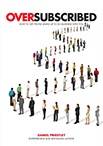 Also by this author: 24 Assets
Also by this author: 24 Assets
This book describes a marketing tactic Priestley advocates as the secret to his own (quite remarkable) success. The technique involves cultivating huge demand and then leveraging this to acquire more business. People who manage to achieve this run-away Social Proof effect are described as being “oversubscribed.” The book outlines seven principles for becoming oversubscribed, and then gives a five-step plan for achieving it. Whilst the formula is not universal, and its role as the cause (rather than consequence) of Priestley’s success is questionable, there are ideas here that anybody can apply.
There are people who don’t chase clients. Clients chase them… In a world of endless choices, why does this happen? Why do people line up, pay more, and book so far in advance when other options are easily available? Why are these people and products in such high demand?
… A product or brand reaches a level of being oversubscribed when there are far more buyers than sellers. It’s when demand massively outstrips supply. It’s when many more people want something than capacity allows for. This book is designed to give you a recipe for becoming oversubscribed, and introduce the underlying ideas that drive this phenomenon.
14. Pre-Suasion – (Robert Cialdini, 2016)
Amazon . GoodReads . Best Review
 Also by this Author: Influence
Also by this Author: Influence
Pre-Suasion presents a surprising answer to an important question: what separates a great communicator from an average one? For Cialdini, the answer is quite often timing. The moments before a message is delivered are critical, and great communicators use that time wisely. In fact, framing the delivery of a message in a different way (watching a debate over another audience member’s shoulder or listening to particular music in the background) can significantly alter the impact it has.
Cialdini returns to a number of the techniques introduced in Influence. Effects such as anchoring, priming and reciprocity are revisited, and there is a more substantial discussion of Social Proof than was given in the earlier publication. However, some of the energy and enthusiasm of Influence has been lost in this more lateral approach to consumer psychology.
15. Nudge – (Richard H. Thaler & Cass R. Sunstein, 2008)
Amazon . GoodReads . Best Review
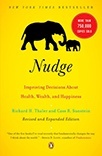 Also by these authors: Quasi-rational Economics, The Winner’s Curse
Also by these authors: Quasi-rational Economics, The Winner’s Curse
Nudge theory has left a vast footprint on the Neuromarketing landscape. Published in 2008, This summary of over ten years of prior research, has spawned a library of related books, inspired catalogues of failed (and some successful) experiments, re-written the language of consumer behaviour and earned Richard Thaler himself a Nobel Prize. Beyond this, the book remains a clear and accessible introduction to the world of “Choice Architecture”. Simply for demonstrating the irrationality of human choice, this book makes our list.
As we shall see, small and apparently insignificant details can have major impacts on people’s behaviour. A good rule of thumb is to assume that “everything matters.” In many cases, the power of these small details comes from focusing the attention of users in a particular direction. A wonderful example of this principle comes from, of all places, the men’s rooms at Schipol Airport in Amsterdam. There the authorities have etched the image of a black housefly into each urinal. It seems that men usually do not pay much attention to where they aim, which can create a bit of a mess, but if they see a target, attention and therefor accuracy are much increased.
Getting the Most From Neuromarketing Books
For the majority of the 20th century, rational models of economics and consumerism dominated the worlds of business and marketing. However, recent decades have called these models of thought and action into question. Brain-scanning techniques, eye-tracking studies and a weight of experimental data has catapulted neuromarketing into the mainstream. This trajectory has been reflected in the impressive book sales and academic recognition afforded to writers such as Robert Cialdini, Dan Ariely and Daniel Kahneman.
However, there is a caveat to the availability of all this expert knowledge… it isn’t enough on its own. Whilst many of the phenomena outlined in these books are universal, the way they are best applied is highly specific. If you want to improve the way you communicate, or make your website more efficient, putting together the world’s greatest neuromarketing bookshelf is only the first step.
There are three important pieces of advice to consider, before redesigning your business’s most valuable asset according to the “Principles of Persuasion”, the “SUCCES” mnemonic, or the 4-stage “Hooked” model:
- Do not look for answers – these books should inspire a curious and interrogative mindset, rather than giving instructions
- Check your intentions – neuromarketing is not mind-control and cannot hide a bad product – it is just a way to communicate more effectively
- Test your ideas before you apply them – Google does it, Amazon does it, even your local PR agency does it. Finding a way to test new content is step two for any neuromarketer.
How Neuromarketing Books Can Increase Your Sales and Sign-Ups
For those with a gap on their neuromarketing bookshelf, Smart Persuasion by Philippe Aimé and Jochen Grünbeck is available on Amazon. In this best-selling 2019 publication, the authors share over 30 years of marketing and consultancy experience. Using the principles described in this book can increase sales and sign-ups for any website.
The easiest way to use neuromarketing techniques on your website is to download an app that can do the hard work for you. Nudgify is a Social Proof app that can be added to Shopify stores, blogs and business websites, to increase sales and sign-ups. Creating effects like Social Proof and FOMO, Nudgify can improve your customer experience and increase your conversion rate. It can also be used to reduce Friction throughout your sales funnel.

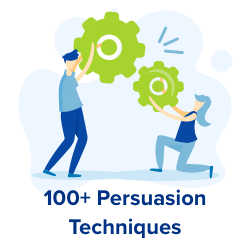
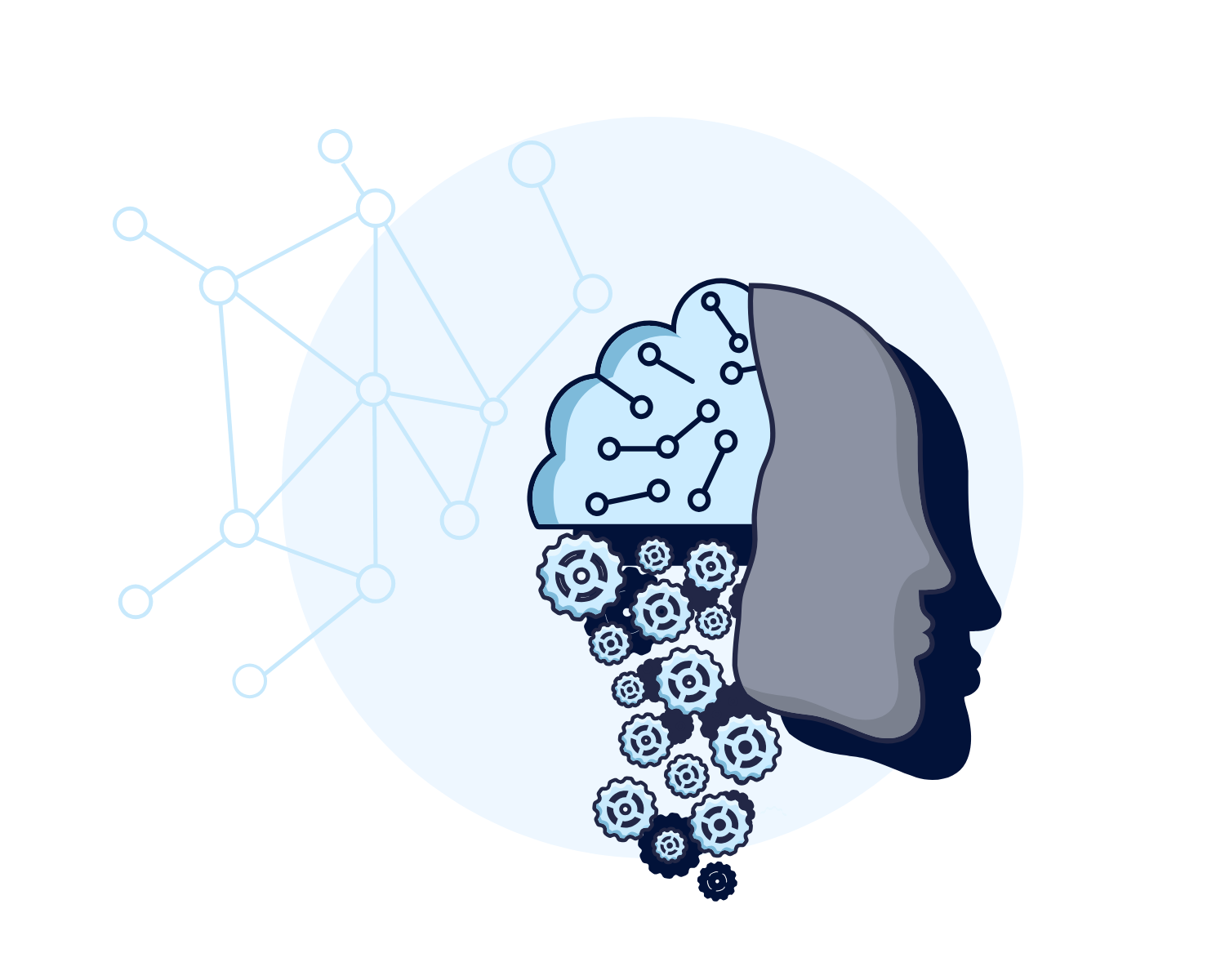

These are all excellent recommendations. In the spirit of shameless self-promotion, I’d like to suggest you consider adding one of the original (and still best-selling) books in this field, Neuromarketing for Dummies by me, Andrew Pohlmann, & Peter Steidl (Wiley, 2013). The “dummies” brand may put off some readers (what’s that old saying about books and covers?) but it is a serious and comprehensive treatment of all aspects of neuromarketing.
Interesting curation. I’m interested in the book of Dr. Ariely. Except for Smart Persuasion, it seems there hasn’t been a publication worth mentioning after 2015.
Everyone should read Predictably Irrational! It’s a great reminder that things aren’t always straightforward and that “common sense” is often wrong.
In the post-2015 category, Friction (Roger Dooley, 2019) and Pre-suasion (Robert Cialdini, 2016) are well worth reading.
Please checkout my latest ebook Why Your Business Needs To Implement Marketing Psychology To Succeed on how using consumer psychology can 10x your sales on autopilot.
Thanks for the suggestion – we’ll make sure to check it out before updating this list for 2021!
This is pretty informative and mind stretching, thought provoking and work spirit awakening.